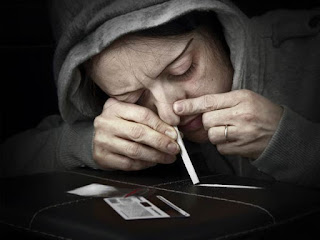No more car accidents, thanks to Autonomous Vehicles
As automobiles are becoming unsustainable, there have been many consequences such as the emission of carbon, high traffic and accidents. To control these, driverless cars have been proposed as a suitable alternative. Although this may potentially provide safety and efficiency benefits, there are major concerns around the public’s willingness to adopt the technology. These concerns relate to security, trust, privacy, reliability and liability. For all of us, self-driving technology is brand new. There’s a lot of talk about it, but it’s not yet clear how it will impact our lives. To increase safety on our roads, simply developing new technology is not enough. A better understanding of how humans and smart vehicles collaborate will make the adoption process simpler and successful in the long run. Self-driving cars promise a future with no accidents, reduced traffic, less congestion and maybe even lower transportation costs.

When it comes to the safety of Autonomous Vehicles, most of the accidents involving them have
been due to human error, so the bigger issue for the industry is what should Autonomous
Vehicles be doing to reduce accidents? Autonomous Vehicles will be dependent on sensors to
detect what is happening around them and today engineers are defining the right mix of sensors
that needs to be implemented – but they also need to consider the costs and computing power
that is required as both are limiting factors. The other key to vehicle safety will be how the software handles unexpected situations. All self-driving vehicles will have to make many decisions every second in order to make adjustments necessary to keep the driver safe.
Humans, not robots, still hold the wheel
Since the internet and smartphone applications have revolutionalised and synced adapting the smart life of our generations where driverless cars have now been deemed as one of the key disruptors in the next technology revolution along with drones and the internet of things that have been recognized as a key area for future research. Google’s self-driving car has become a hot topic in the media and governments around the world have begun to develop strategies to address the challenges that may result from self-driving vehicles.
Cars are evolving, but are drivers?
In the last few years, we have seen a steady rise in technology and new features in the automobile industry where the focus is on Advanced Driver Assistance Systems (ADASs), the technology enables fully automated vehicles to drive themselves which includes automatic braking & lane assist that is designed to prevent driver’s distraction & improve driving safety. Car makers need to ensure that when it comes to the deployment of Autonomous Vehicles they are able to provide a safe and efficient computing platform. Driverless cars eliminate the anxiety of a potentially dangerous driver; they could also lead to less accountability. Responsible drivers would protect the vehicle from intruders, but driverless cars could deliver even better supervision. Together with vehicle-equipped technologies, human assistants can remotely monitor for and respond to, any potentially dangerous situations. For example, the system could detect sounds of conflict or hostile language through the in-vehicle conversational interface and alert emergency assistants to carry out appropriate intervention. This combination of sensors and cameras inside and outside of our future vehicles could also deter abusive behavior before it happens. For example, an internally facing camera could allow passengers to check the summoned car’s interior. The availability of devices and access to information would improve liability issues when unexpected accidents or inappropriate incidents occur, placing vulnerable passengers in control of their situation from the onset all the way through to their final destinations.
Safety is a social context. The context is different if you’re young or old, male or female; different if you’re in a familiar place or a foreign place; different if you’re with friends or strangers; different if you’re alone or with kids. Future autonomous systems should be able to respond appropriately to these different contexts. By extending the notion of personalization beyond typical preferences to personal safety. For example, an autonomous system could suggest a route through a populated area at night, instead of only suggesting time-efficient or scenic (yet deserted) routes.
The promise of Autonomous Vehicles is to provide safer mobility for all, so it’s crucial for everyone to play a part in designing and testing them. Now more than ever, we must challenge what we have come to accept in current mobility services and this time, get it right.








